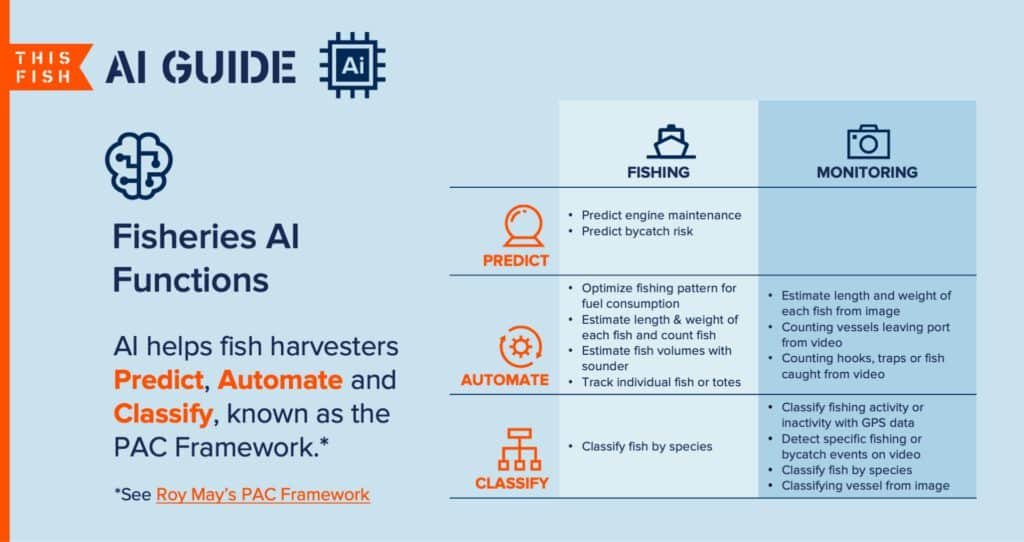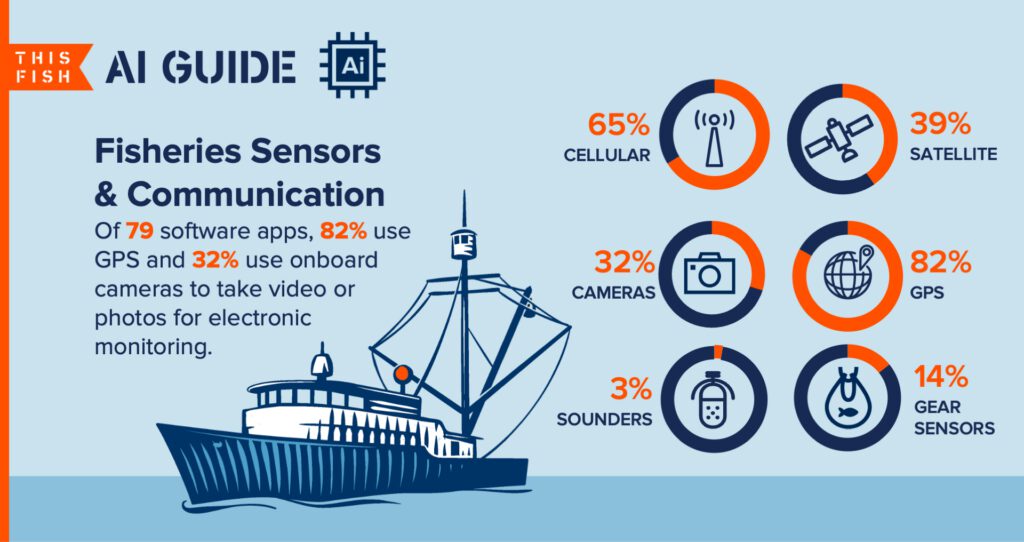Pioneering electronic monitoring in fisheries
For almost her entire career, Amanda Barney has been on a mission to solve a troubling problem. In 1992, she was in middle school in St. John’s, Newfoundland, and witnessed firsthand the collapse of the North Atlantic cod stocks.
“I remember rowing in the bay with my father and seeing all the cod,” she recalls. “It seemed impossible that they were gone. I used to see so many of them.”
Barney viscerally felt the impact, which spurred her life-long quest. She studied fisheries science and oceanography, and then moved to Alaska in 2003 to begin a stint as an on-board fisheries observer. She spent more than 150 days at sea.
“In Alaska, I came to realize that often the government thinks fishermen are lying and the fishermen think government scientists don’t understand what’s actually going on in the ocean,” she explains. She felt a tangible lack of trust between industry and science.
She wanted to bridge this gap and thought at-sea monitoring technologies could be the “equalizer,” providing baseline data trusted by both skippers and scientists.
Today, Barney is the CEO of Teem Fish Monitoring Inc. She’s one of the pioneers developing new technologies to collect, digitize and analyze data for fisheries. Her career closely mirrors the industry’s technology adoption lifecycle, from manually collecting analog data as an at-sea observer 20 years ago to today managing cutting-edge projects using artificial intelligence (AI).
Fisheries monitoring technology really got its start with vessel monitoring systems (VMS). In 1982, Inmarsat launched the first commercial tracking service followed by the Automated Identification system (AIS) in 1998. The next year the world’s first electronic monitoring (EM) system using on-board cameras was pioneered in a crab fishery in British Columbia. Electronic logbooks also began to replace paper around this time. South Africa’s Olrac was one of the first e-logs in 2003. Two years later, Alaska launched the first electronic fish tickets, heralding the beginning of electronic reporting in fisheries.
The game-changing event came in June 2007 when Steve Jobs introduced the iPhone to the world. Mobile computing would revolutionize the world, including fisheries. Digitizing data and GPS tracking was now literally in the palm of your hands. In 2008, The Nature Conservancy built eCatch, one of the first modern web apps for fisheries. An iPhone version came out in 2012.
Fisheries experiences sluggish innovation

Analysis of 79 companies or agencies providing software to global fisheries suggests tech adoption has been a slog. More than a quarter of the companies were founded before 2000, mostly the first wave of VMS providers. Then, for more than a decade, fishtech was in the doldrums. It was a period of small-scale pilots, especially for electronic monitoring. It wasn’t until 2012, with the maturing of mobile computing, that new software companies and agency apps began to steadily appear each year.

Still, tech adoption has been sluggish in fisheries compared to aquaculture. In the last five years, the fishing industry has only seen the launch of 21 new tech companies or government apps compared to 42 in aquaculture.

Fisheries has also been slow in adopting cutting-edge technologies, especially artificial intelligence. Currently, 18 percent of software providers—14 out of 79—are using or piloting AI. The vast majority are deploying computer vision to analyze video and images from fishing vessels. Interestingly, seven of the AI-enabled apps were funded by NGOs, suggesting less than half of the AI is commercialized.

That’s a stark contrast to aquaculture where 70 percent of all software includes artificial intelligence. And only half of the AI in aquaculture is computer vision.
Why fisheries innovation trails aquaculture
What’s behind this divergence? Two factors. First, incentives. In aquaculture, AI is driving down two of the industry’s largest costs: optimization of feeding and reducing mortalities. Farmers are intrinsically motivated to adopt AI since it makes business sense.
In fisheries, most technology is being driven not my market dynamics, but regulatory compliance. Fishermen are reluctant to adopt technologies that increase surveillance with the exception, perhaps, of improved safety at sea. However, electronic monitoring is proving cheaper and less intrusive than human observers.

The second factor is related to IoT sensors which have driven the explosive growth in digital data globally which, in turn, is the fuel that powers AI. It’s estimated that the amount of digital data in the world is doubling every two years. There just aren’t many sensors in fisheries. Fish harvesters don’t monitor water quality, feeding, growth rates and fish health unlike farmers who deploy many types of sensors to collect this essential data.

About 82 percent of fisheries software collects data from GPS and 32 percent use cameras. Even less (14 percent) use gear sensors attached to hydraulics or winches to detect fishing activity or RFIDs to identify gear. Only two companies are using data from sounders to power AI to improve estimates of schooling fish.

A lot of fishtech focuses on simply going paperless. Electronic logbooks account for 71 percent of apps followed by VMS (53 percent) and electronic monitoring (29 percent). Most of the tech is focused on industrial and mid-sized fleets which only make up 18 percent of the 2.86 million motorized fishing vessels in the world. That makes sense since these boats catch half the world’s fish. Still, there are currently only 1,523 vessels using electronic monitoring (See TNC report).

Private foundations fill funding gap in fisheries tech
As a result of this slow growth, the fishing industry has only seen a fraction of venture capital and angel deals compared to aquaculture. According to Crunchbase, there are only 9 reported deals among the 79 commercial fisheries tech providers. These deals generated almost $19 million USD in investment. In aquaculture, 82 software companies generated 21 deals worth $293 million USD. Aquaculture deals were seven times bigger than fisheries.

To bridge the financing gap, private foundations have stepped in. In the last two decades, four foundations—Walton, Packard, Moore, and National Fish and Wildlife—have put $27.4 million USD in grants for electronic monitoring and technical assistance to improve fisheries accountability. Three-quarters of this money has been since 2015. And even more foundation money has been put into market campaigns to generate incentives—including better prices and market access—for verified catches.

NGO campaigns, foundation grants and government regulators have helped drive tech adoption. No surprise that Canada, the United States, Australia, and New Zealand have the highest number of tech providers. Indeed, New Zealand is pushing electronic monitoring on up to 300 inshore vessels over the next three years. New Zealand is also the location of SnapIT, one of the most innovative EM companies pioneering AI and “edge” computing on vessels.


Artificial intelligence critical to scaling electronic monitoring
“If we want electronic monitoring to scale across thousands of vessels, you need superhuman video reviewers,” says Barney. These “superhumans” are machine learning algorithms.
In Barney’s view, AI will be critical for driving down two EM costs. First, algorithms could review video onboard vessels and only retain clips with relevant fishing activity, reducing data storage and processing costs. “The size of the video archive on the vessel needs to be culled,” Barney explains.
Second, the video needs to be automatically reviewed using algorithms to classify and count fishing activity such as species, bycatch, bird strikes, gear setting and so on. This has proved challenging since camera angles, variable weather, deck layouts and crew behaviour can vary wildly from vessel to vessel.
“The problem is that the AI gets overtrained on a small dataset from one vessel. Then you put it on a different vessel and the AI doesn’t know what’s happening,” Barney explains. “It’s needs to get retrained.”
The quest now is to universalize the AI using large video datasets from multiple vessels to train the algorithms. The Nature Conservancy has set up Fishnet.AI to provide such training data. A few other technologies could also prove invaluable for scaling including powerful edge computing to run AI on vessels and affordable at-sea connectivity which is being pioneered by Elon Musk’s Starlink using low-orbit satellites.
“We actually think that the technology can get us to a place where we can have useful information in real-time from hundreds of thousands of vessels that is affordable,” Barney says. “That’s a reasonable thing to dream about.”
Please sign-up for our monthly newsletter Catch-Up to receive the next post.



